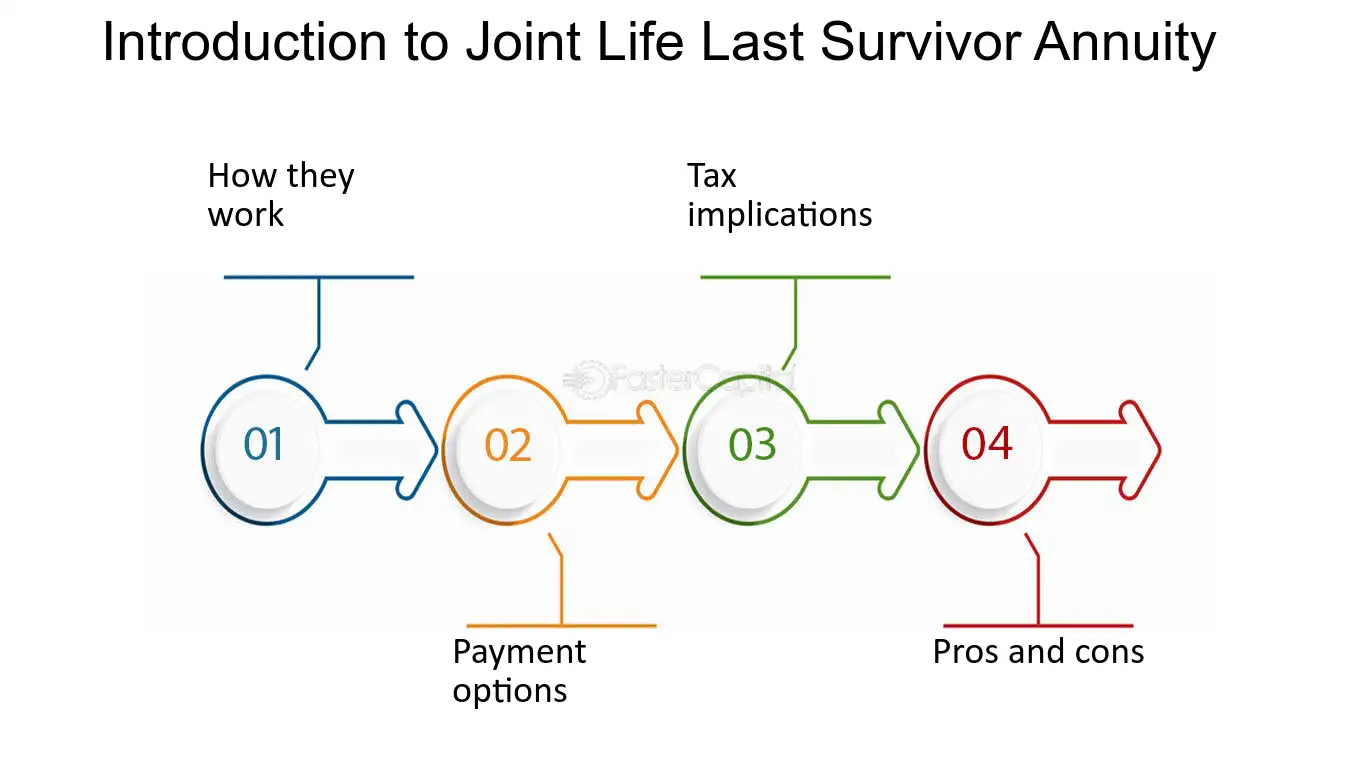Benefits of Joint Life With Last Survivor Annuity
Joint Life With Last Survivor Annuity is a type of annuity that provides financial security and peace of mind for couples or partners. It offers several benefits that make it an attractive option for those looking to secure their financial future.
1. Lifetime Income for Both Individuals
One of the main benefits of Joint Life With Last Survivor Annuity is that it provides a lifetime income for both individuals. This means that even if one person passes away, the surviving spouse or partner will continue to receive regular payments. This can be especially important for couples who rely on both incomes to cover their living expenses.
2. Protection Against Longevity Risk
3. Enhanced Financial Security

By choosing Joint Life With Last Survivor Annuity, couples can enhance their financial security. This annuity provides a stable and predictable income stream, which can help cover essential expenses such as housing, healthcare, and daily living costs. It eliminates the worry of outliving one’s savings and provides a sense of financial stability.
4. Potential Tax Benefits

Joint Life With Last Survivor Annuity may also offer potential tax benefits. Depending on the jurisdiction, the income received from the annuity may be taxed at a lower rate or may be eligible for certain deductions. It is important to consult with a tax advisor to understand the specific tax implications based on individual circumstances.
5. Customization Options
Lastly, Joint Life With Last Survivor Annuity offers customization options to meet individual needs and preferences. Individuals can choose the frequency and amount of the annuity payments, as well as any additional features or riders that may be available. This flexibility allows couples to tailor the annuity to their specific financial goals and circumstances.
Mechanics of Joint Life With Last Survivor Annuity
Joint Life With Last Survivor Annuity is a type of annuity that provides income for two individuals, typically a married couple, for the duration of their lives. This annuity option ensures that both spouses receive regular payments even after one of them passes away.
Here’s how the mechanics of Joint Life With Last Survivor Annuity work:
1. Initial Investment
To start a Joint Life With Last Survivor Annuity, the couple must make an initial investment with an insurance company or financial institution. This investment can be a lump sum payment or a series of regular contributions.
2. Life Expectancy
The insurance company calculates the life expectancy of both spouses based on their age and other factors. This calculation helps determine the amount of income that will be paid out each month.
3. Monthly Payments

Once the annuity is set up, the couple will start receiving monthly payments. These payments are typically fixed and continue for the lifetime of the surviving spouse.
4. Survivor Benefit
If one spouse passes away, the surviving spouse will continue to receive the same monthly payments for the rest of their life. This ensures that the surviving spouse is financially supported even after the loss of their partner.
5. No Residual Value
Unlike some other annuity options, Joint Life With Last Survivor Annuity does not have a residual value. This means that once both spouses pass away, there are no remaining benefits or payments to be made.
Overall, Joint Life With Last Survivor Annuity provides a reliable source of income for couples, ensuring that both spouses are financially protected throughout their lives. It offers peace of mind knowing that even after one spouse passes away, the surviving spouse will continue to receive the same level of financial support.
Factors to Consider When Choosing Joint Life With Last Survivor Annuity
1. Age and Health of the Annuitants
The age and health of both annuitants play a crucial role in determining the payout amount of a joint life with last survivor annuity. Generally, the younger and healthier the annuitants, the lower the payout amount will be. It is important to assess the life expectancy of both individuals to ensure that the annuity will provide sufficient income for the duration of their lives.
2. Income Needs and Lifestyle
Before purchasing a joint life with last survivor annuity, it is essential to evaluate the income needs and lifestyle of both annuitants. Consider factors such as housing expenses, healthcare costs, and any other financial obligations. It is important to choose an annuity that will provide a steady stream of income to cover these expenses and maintain the desired lifestyle.
3. Financial Stability of the Insurance Company
When selecting an annuity provider, it is crucial to assess the financial stability and reputation of the insurance company. Research the company’s ratings from independent rating agencies to ensure that they have the financial strength to meet their obligations and provide the promised income for the duration of the annuity.
4. Flexibility and Customization Options

Consider the flexibility and customization options offered by the annuity provider. Some annuities may allow for adjustments to the payout amount or the inclusion of additional features, such as inflation protection or a death benefit. Assess these options to ensure that the annuity can be tailored to meet specific needs and preferences.
5. Tax Implications
It is important to understand the tax implications of a joint life with last survivor annuity. Consult with a tax professional to determine how the annuity income will be taxed and if there are any potential tax advantages or disadvantages. This will help in making an informed decision and avoiding any unexpected tax liabilities.
By carefully considering these factors, individuals can make an informed decision when choosing a joint life with last survivor annuity. It is recommended to consult with a financial advisor or annuity specialist to ensure that the chosen annuity aligns with the specific needs and goals of the annuitants.

Emily Bibb simplifies finance through bestselling books and articles, bridging complex concepts for everyday understanding. Engaging audiences via social media, she shares insights for financial success. Active in seminars and philanthropy, Bibb aims to create a more financially informed society, driven by her passion for empowering others.
